|
|
|
|
 |
|
|
|
 |
|
|
|
 |
|
|
|
|
|
Illustrations:
Ayan, Alia, Ala'a and Joshua
Photography: Andy |
|
|
|
|
|
|
|
|
|
|
|
|
|
|
|
|
|
|
|
|
|
|
|
|
|
|
|
|
|
|
|
|
|
|
|
|
|
|
|
|
|
|
|
|
|
|
|
|
|
|
|
|
|
|
|
|
|
|
|
|
|
|
|
|
|
|
|
|
|
|
|
|
|
|
|
|
|
|
|
|
Garden
flower - Camelia
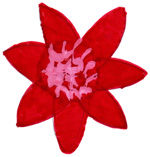
This flower was picked up off a pavement nearby. I used Typex
to paint the frilly inside petals.
|
|
|
|
|
|
Tree
- Sycamore
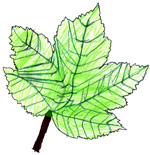
The sycamore is one of the earliest of our native trees to come
into leaf. This leaf was out in March. But it is not strictly “native”
like the oak and ash. It was introduced some centuries ago. In autumn,
the fruits spin round and round on their way to the ground like
little helicopters.
 |
|
|
|
|
|
|
Wild
flower - Primrose
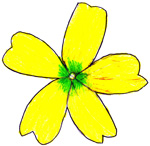
This was brought back from Devon. We were also given 3 tiny seedlings
to plant. They are called primroses because they look like a wild
rose and are the earliest (the “prime”) to flower.
The petals should be pale yellow. Christine has since given me
some better, water soluble crayons (Caran d’Ache).
|
|
|
|
|
|
|
|
|
|
|
|
|
|
|
|
|
|
|
|
|
|
|
|
|
|
|
|
|
|
|
|
|
|
|
|
|
|
|
|
|
|
|
|
|
|
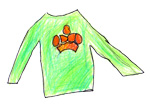 Education
& Community Officer for the Royal Parks Nick Lane visited us
in our downstairs computer room. Christine, Sarah and Salwa were
there as well as us two. Nick wore a green sweatshirt with a gold
crown on it because he works for The Royal Parks.
He showed us a big chart of where birds come from in Spring (mostly
from Africa) and asked us that we knew about Spring. He drew toad
spawn and frog spawn on the board. We looked at lots of photos of
blossoms and flowers taken in the Royal Parks. We might be able
to watch bats in the cemetery opposite, he said. Christine tried
to demonstrate why we get day and night and Summer and Winter by
using a kebab skewer and 2 christmas tree baubles. Ala’a said
she wanted a compost heap on our site and Christine said she wanted
to grow sunflowers there to feed the birds in Winter. Nick said
that if we did that we would have to support them. He gave us a
minibeast wordsearch to do but it was very hard and we haven’t
finished it yet. Education
& Community Officer for the Royal Parks Nick Lane visited us
in our downstairs computer room. Christine, Sarah and Salwa were
there as well as us two. Nick wore a green sweatshirt with a gold
crown on it because he works for The Royal Parks.
He showed us a big chart of where birds come from in Spring (mostly
from Africa) and asked us that we knew about Spring. He drew toad
spawn and frog spawn on the board. We looked at lots of photos of
blossoms and flowers taken in the Royal Parks. We might be able
to watch bats in the cemetery opposite, he said. Christine tried
to demonstrate why we get day and night and Summer and Winter by
using a kebab skewer and 2 christmas tree baubles. Ala’a said
she wanted a compost heap on our site and Christine said she wanted
to grow sunflowers there to feed the birds in Winter. Nick said
that if we did that we would have to support them. He gave us a
minibeast wordsearch to do but it was very hard and we haven’t
finished it yet. |
|
|
|
|
|
|
|
|
|
|
|
|
|
|
|
|
|
|
|
|
|
|
|
|
|
|
|
|
|
|
|
|
|
|
|
|
|
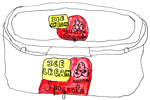 We
took a begonia leaf and made cuts in its veins. Then we pressed
the cut veins against moist compost in a Carte d’Or ice cream
carton, securing the leaf with wooden toothpicks. We put the lid
on and kept the carton on a shelf in Linda’s office. We
took a begonia leaf and made cuts in its veins. Then we pressed
the cut veins against moist compost in a Carte d’Or ice cream
carton, securing the leaf with wooden toothpicks. We put the lid
on and kept the carton on a shelf in Linda’s office.
|
|
|
|
|
|
|
|
|
|
|
|
|
|
|
|
|
|
|
|
|
|
|
|
|
|
|
|
|
|
|
|
|
|
|
|
|
|
|
|
|
|
|
|
|
|
|
|
|
|
|
|
|
|
|
|
|
First,
the answers to last month’s (February’s) quiz
• the mystery flower was gorse. If you clicked on it, you
would have got a much bigger and better picture. If you downloaded
it and painted it bright yellow (with green spikes and stems)
-
then
WELL DONE YOU.
• which bud belonged to which tree? We hope you clicked
on all the pictures to enlarge them because the clue to the names
was often in the detail.
1 was c (thorn - you should have been able to
guess that because there were thorns on the branch.)
2 was e (pussy willow - the catkins looked furry
and strokable, like cat’s fur.)
3 was d (horse chestnut, sometimes called sticky
buds)
4 was b (hazel - the long yellow tassels are
called catkins)
5 was a (ash - the buds are flat, black and very
distinctive.)
How did you score:
5 out of 5? Brilliant
4 out of 5? Very good.
3 out of 5? You’re a good guesser.
2 out of 5? Are you sure you were trying?
|
|
|
|
|
|
|
|
|
|
|
|
|
|
|
|
|
|
|
|
|
|
|
|
|
|
|
|
|
|
|
|
Copyright ECOwatch
2006 All rights reserved. |
|
|
|
|
|
|
|
|
|
|
|
|
|
|
|
|
|
|





